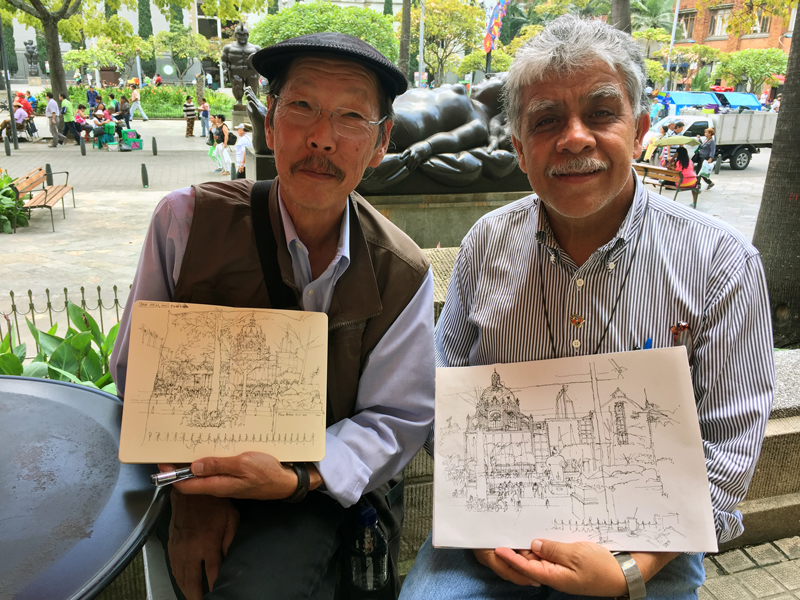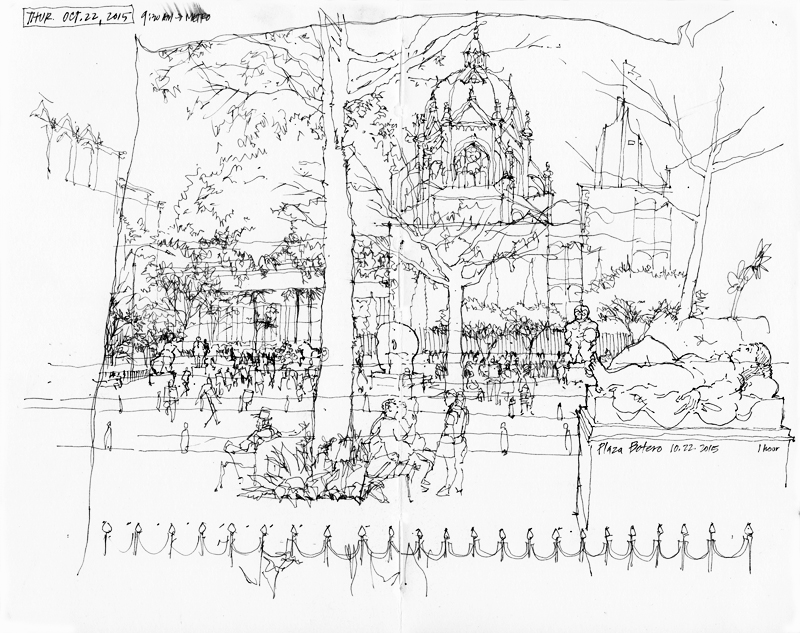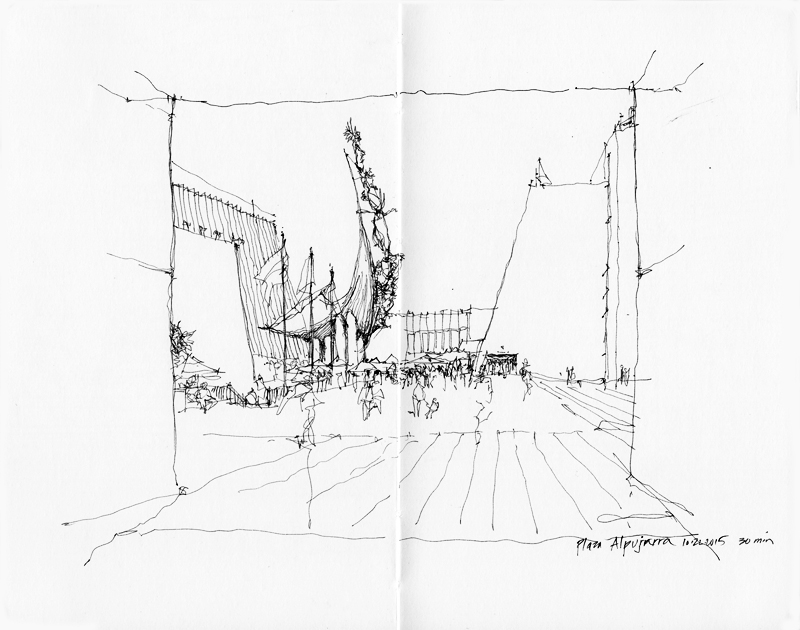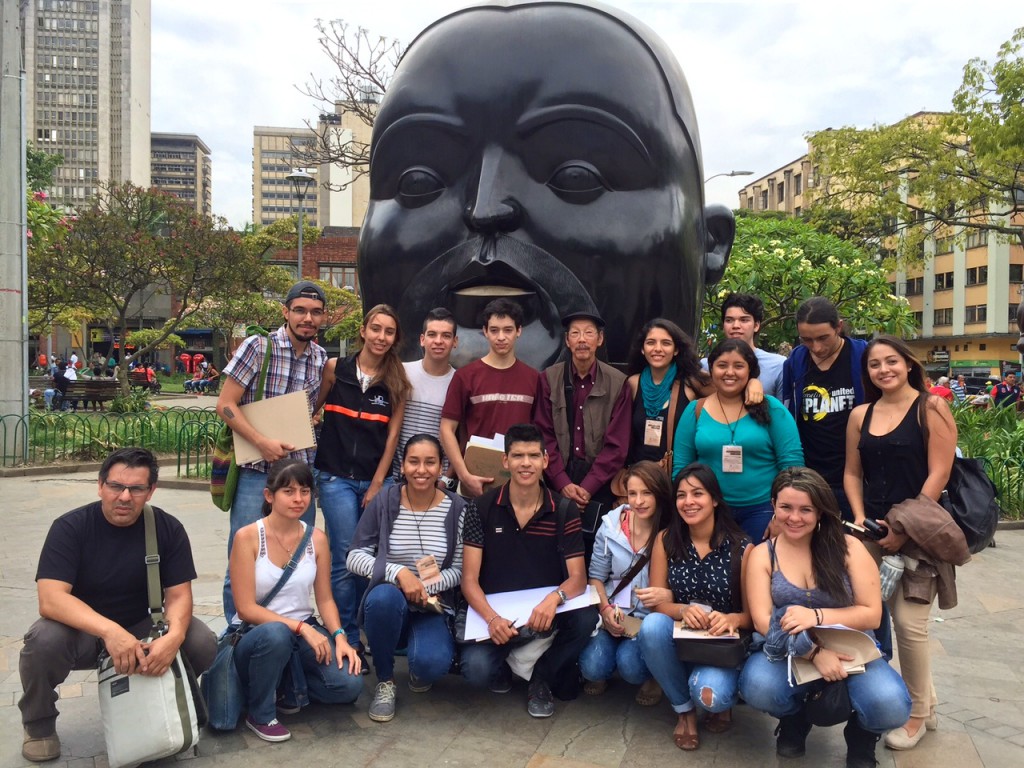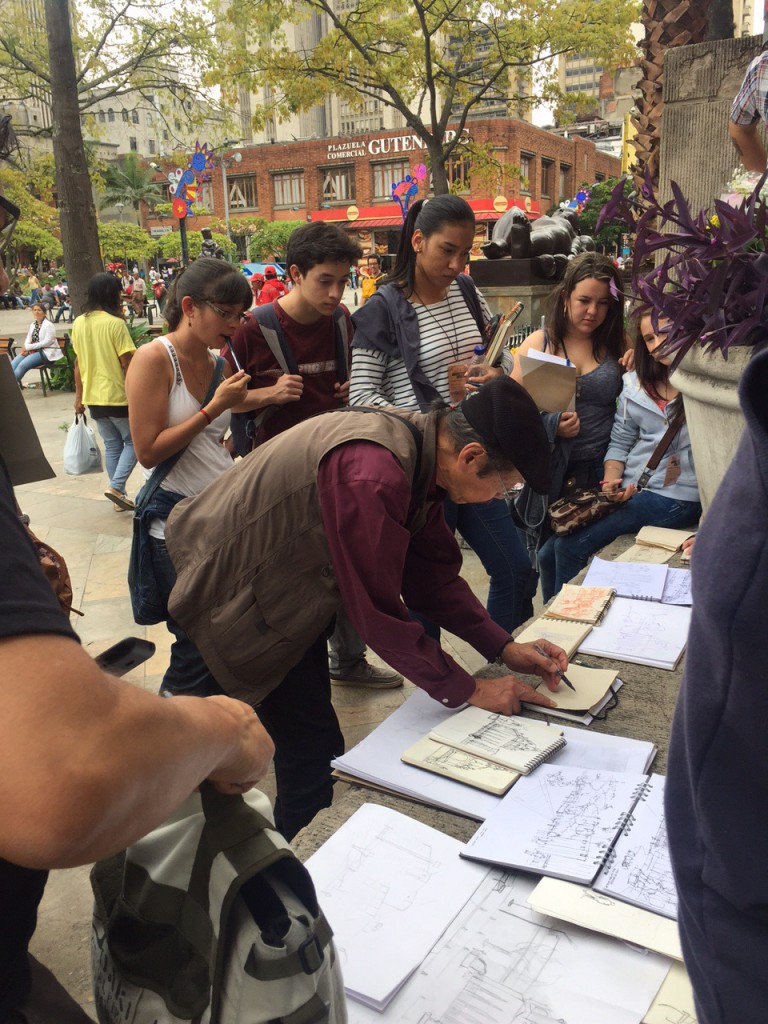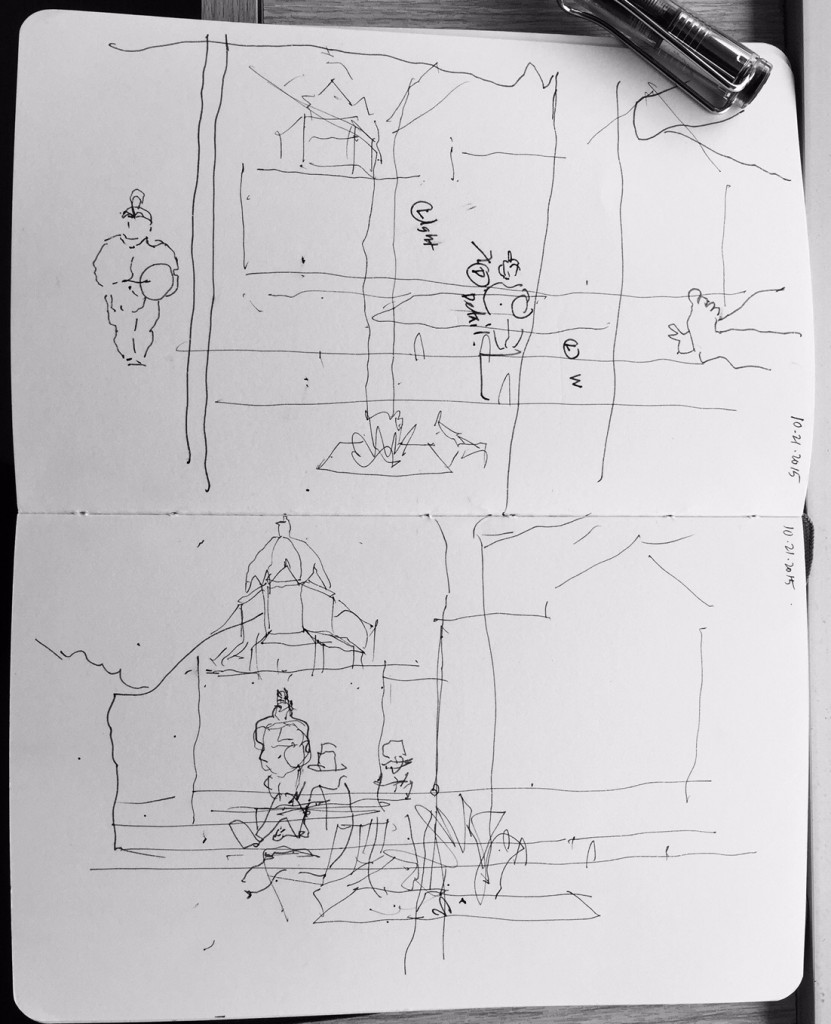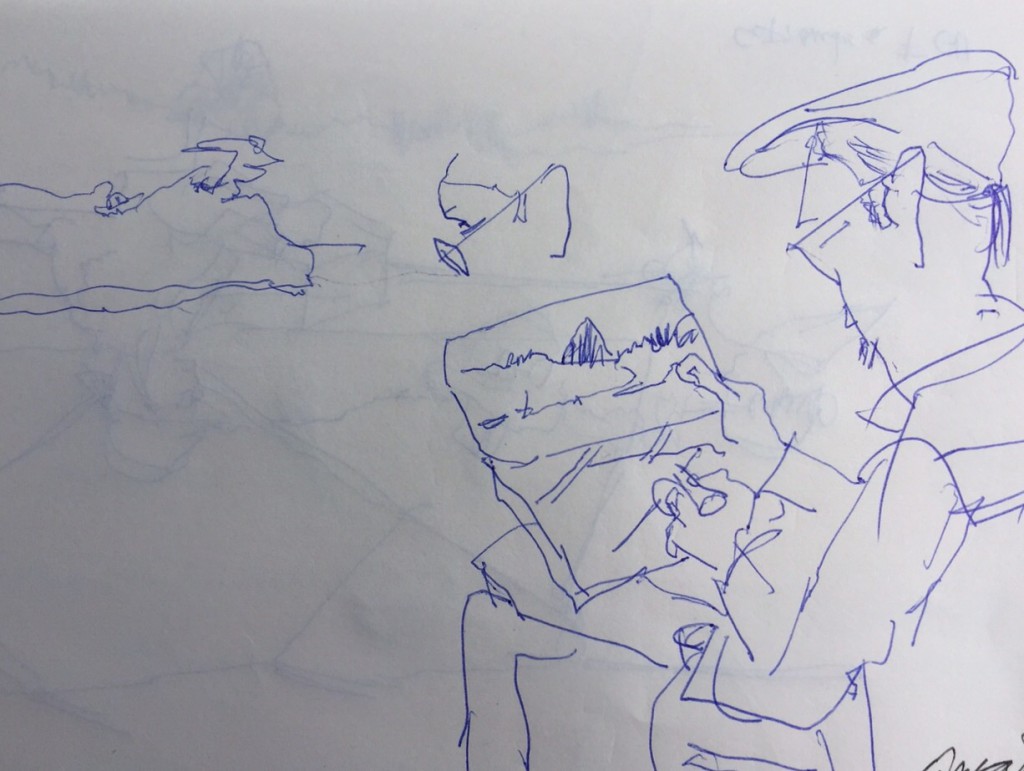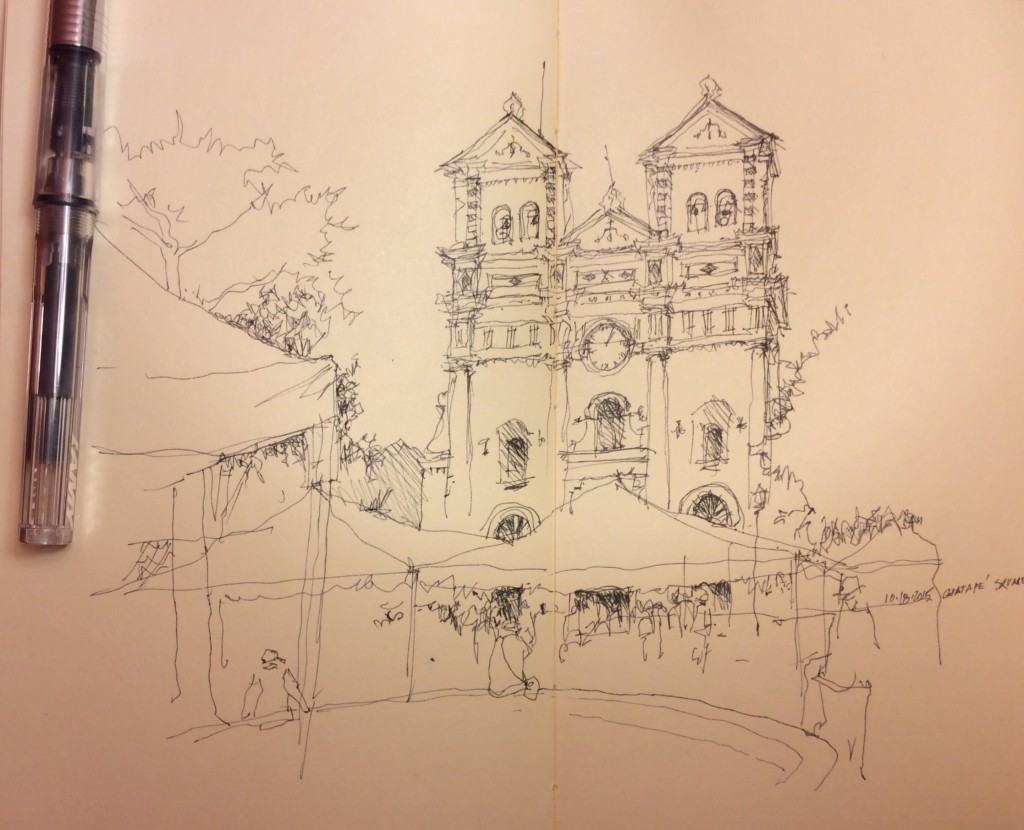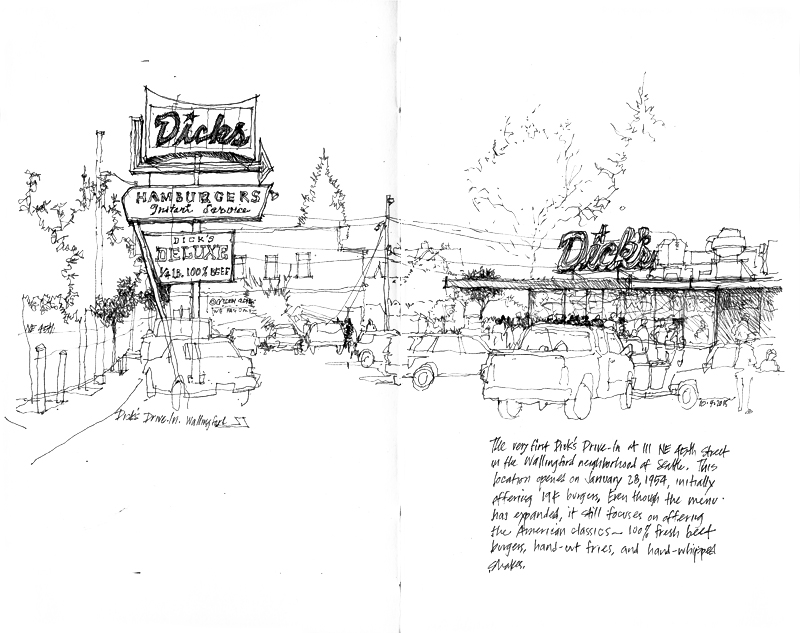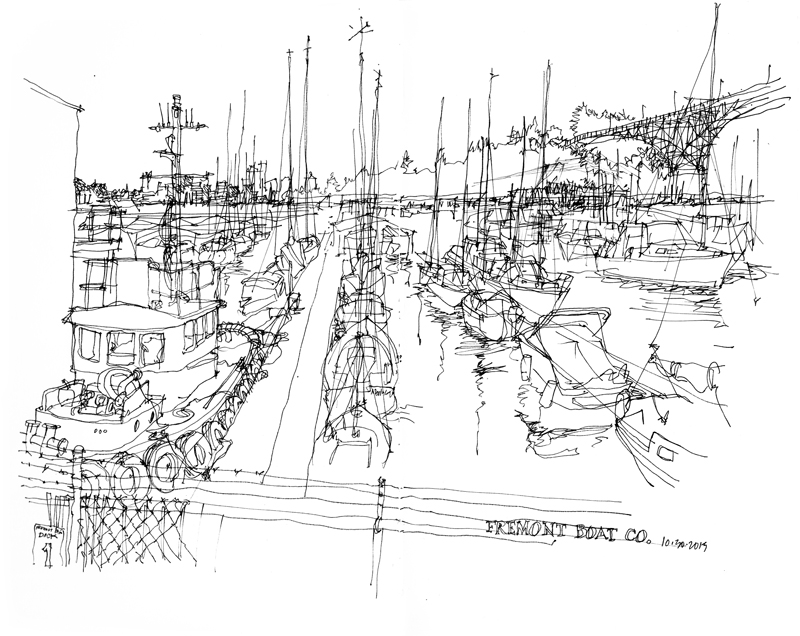The day after the workshop with students at Botero Square, I met Fernando Saldaña Cordova from Sonora, Mexico, so that we could draw our own personal views of the public space in the old quarter of Medellin.
An hour and a short walk later, we came upon the Plaza Alpujarra, the administrative center of the city featuring a large, sweeping sculpture Monumento a La Raza (Monument to Race) by Rodrigo Arenas Betancur. Upon entering the public space, we decided we had to stop and do another drawing before lunch.
In my next post, I will show more scenes from Medellin, the City of Eternal Spring.

